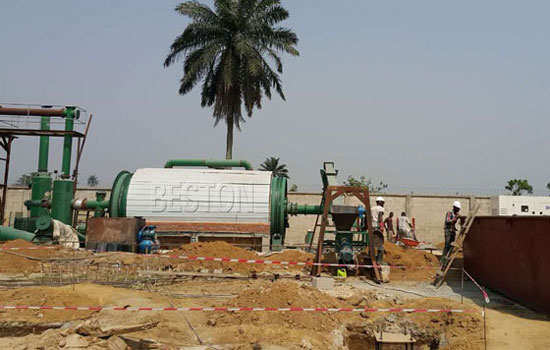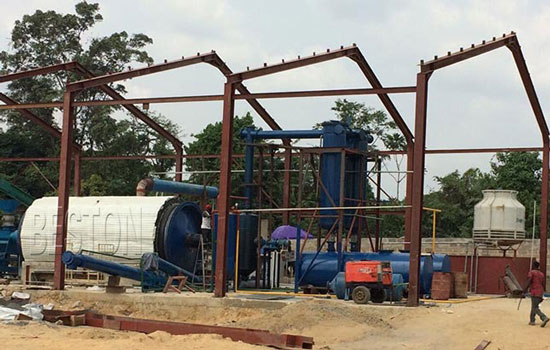Introduction
Oil sludge refers to waste produced as a result of storage of crude oils. Processing crude oil leads to the production of oil sludge as a byproduct. To handle this byproduct successfully, you must separate it into its constituents; water, oil and solid. The crude oil sludge treatment process primarily involves the subjection of oil sludge to chemical, biological or thermal cure, long-term storage and any other process intended to eliminate health hazards that may result from using the same before being released into the environment.

oil sludge pyrolysis plant
1. Thickening
The raw slurry has high water content. In sludge thickening stage, the dry solid content level is increased through the separation and removal of the moisture content of the sludge. Besides being the first unavoidable step, sludge thickening optimizes all the following steps by reducing the magnitude of structures a well as operating costs. Examples of the processes involved include progressive thickening and gravitation settling. Get cost analysis here: https://www.bestongroup.com/pyrolysis-plant-cost/.
2. Stabilization
Stabilization serves to reduce chemical and biological reactions to the least. Aerobic digestion happens to be the most common process used for this stage. Concentrated inorganic and organic sludge matter are disintegrated microbiologically anaerobically (in the absence oxygen) before being converted into methane and other inorganic end products. The primary benefits are the volume reduction, biogas production, and stabilization of the oil sludge.
3. Oil Sludge Dewatering
This process increases the dry solid content of the oil sludge. The different forms of equipment used to process require the use of flocculant aid intended to keep the excess sludge flocculating. In some cases, coagulating chemicals like aluminum and iron are introduced at this stage to boost the efficiency of polymers and minimize the consumption of the flocculent aids in sludge dewatering. The mobile pyrolysis plant is designed to dispose the oil sludge in a green way.

oil sludge treatment plant
4. Sludge Hygienisation
Sludge hygenisiation also referred to as disinfection, is the process that reduces the content of harmful bacteria below a certain level accepted by the relevant authorities. The necessity of disinfection is dependent on sludge disposal method. It is also crucial for disposal to the environment. You can carry out this process using any of the two types of treatments; Elevation of oil sludge temperatures beyond 55 to 70 degrees Celsius for a given period.
Raising pH value of the matter above 12 for a specified period of time
While carrying out disinfection process, the pathogenic bacteria should be eradicated and ascertained with the appropriate measurements.
5. Drying
Drying reduces further the water content of the sludge. It is employed mostly in large scale oil sludge treatments to increase heat value of the filth for incineration. While drying for landscaping disposal is possible, people do not frequently use due to the high costs involved. Thermal drying techniques like mono-incineration and co-incineration are increasingly gaining popularity as sustainable and reliable solutions for converting oil sludge into a valuable product.
6. Environmental Protection
Before disposing the sludge into the environment, care should be practiced to avoid impacting the environment adversely. The sludge should not contain non-biodegradable matter, for example, PVC materials which can make the land disposal unappealing. You should also practice odor control before releasing the sludge into the environment. The oil sludge pyrolysis waste plant is eco friendly: bestongroup.com.
Conclusion
The above oil sludge recovery processes are necessary to ensure the matter does not adversely affect the environment. Consequently, great care should also be exercised to avoid slime running off into sludge adjacent land or road, and potentially causing grave damage.